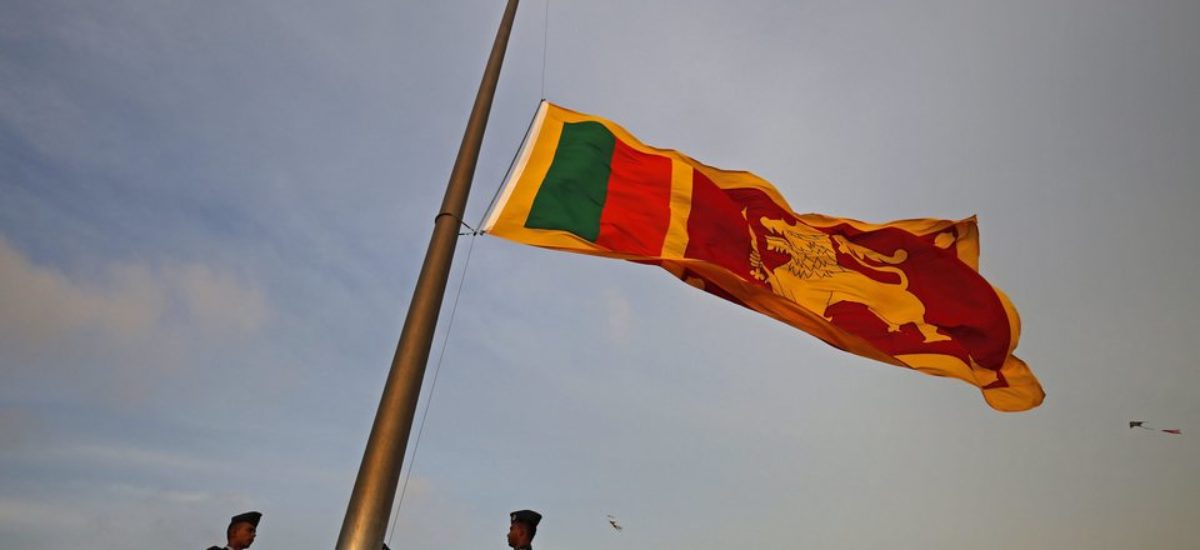Photo courtesy of Jakarta Globe
Both Sinhala nationalists and followers of liberal peace base their analysis of post-war Sri Lanka as a country that has ended a violent phase of its history, and now it is time to focus on other political objectives. For Sinhala nationalists, we need to end all talk of identity politics and focus building a strong state. For political liberals, the focus is what is called transitional justice, reconciliation and promoting values of liberalism as a means of consolidating the post-war state. They would welcome external interventions based on these ideas and will not have much to say on contradictions of capitalist transition.
Believers in capitalist growth, which is supposed to take care of all our problems, would like to continue with institutional reforms that will promote markets on land, get rid of even the meagre provisions that protects labour, and promote foreign investment. They also support a strong state that would ensure stability. Sometimes those who adhere to these perspectives would even like to forget the horrendous, social costs and thousands of deaths from all communities, during the 30 year violence and get on with their political objectives.
In contrast to the above positions, the basic assumption of this note is that we need a better framework to capture post-war context of Sri Lanka, capture its complexity and develop alternative political strategies to take forward progressive politics. Focus on state formation can provide such a framework. States like any other social phenomena are a product of history. There is nothing natural about states. They have undergone changes in the past, are changing in the present, and are likely to do so in the future. These perspectives are lost in the usual treatment of the state, where it is treated as a concrete self-contained entity that has attained a final status. Ahistorical notion of sovereignty is also based on this idea. Of course, those who control the state, and their ideologues always try to convey this notion. A whole paraphernalia of ideas and symbols have developed to convey the eternal character of the state. In contrast to this, when studying the state, it is always necessary to maintain a perspective of change, and therefore state formation is the more appropriate approach.
What happened in 2009 was consolidating the territory of the Sinhala Buddhist state through military means. This strategy began in 1979 when troops were first sent to the North after enactment of the Prevention of Terrorism Act (PTA). The last phase of this military dimension, which was a battle between two competing state-building projects – the Sinhala Buddhist state versus the LTTE’s attempt to build an Eelam through arms ended in 2009 with the defeat and military destruction of the LTTE. As in the case of many state formation processes this ended with heavy civilian casualties. This episode of the post-colonial state formation was only one aspect of a much large issue of state minority relations. It was not some sort of an aberration. It was a result of inherent contradictions of the post-colonial state formation process. Just because the violence has ended these contradictions have not disappeared.
The post-war period of state formation is a product of the period of when contradictions between the Sri Lankan state and Tamil minority led to an armed conflict and how it ended. The new period generates its own contradictions and conflicts. These conflicts and contradictions can be understood by looking at the following variables of the state formation process – relations between the state and minorities, relations between the state and Sinhala majority in a context of continued capitalist transition, political struggles within the Sinhala political elite to control the state, and how post-war state formation will relate to the global context.
Although the period of armed violence has ended challenges of forming a legitimate state in a multi-ethnic society continues. New developments that have a bearing on this variable are, rise of a new form of Sinhala Buddhist extremism and this trend becoming politically prominent; continuation of Tamil politics which was always much wider than the LTTE. A new dimension of this is Tamil polity becoming a global phenomenon; worsening of relations between Muslim community and the state. Radicalisation of Muslim politics in parallel. Finally, when discussing post-war state-minority relations, we must not forget the other identity group – Hill Country Tamils or Mallayah Makkal. What is interesting is that they have undergone an interesting transformation during the post-1977 period. The question is what will happen in the future.
In relation to the Sinhala majority, continued efforts to promote capitalism will happen in a society that has seen 40 years of the impact of economic policies that gave prominence to markets, private sector, and openness to global capitalism. The most important changes are smallholder agriculture becoming less viable, a large section of the population depending on wages for their livelihood, often within an institutional structure that is weak at protecting the rights of labour and growing inequality. The key issue in this context is how the political elite and their international backers will try to take this reform process forward. The political reforms of capitalist transition have not been a peaceful process in the past. Therefore, we need to be mindful of how this will proceed in the future.
The primary reasons for the establishment of political institutions through the 1978 constitution was to manage possible opposition from the Sinhala majority to economic reforms. The focus was controlling the power of the parliament. But this had an impact on the political struggles to control the state among the Sinhala political elite. In the post-war period this is taking place in a new context because of shifts in the political leadership. The very fact that Rajapaksa gave political leadership in consolidating the territory of the Sinhala Buddhist state has made the Rajapaksa family a new addition to elite political families. It has also given rise to a new political party, the SLPP, supported by the Sinhala majority. There is a decline of the SLFP, and divisions within the UNP. These signify major changes in the political system. Political parties in this political system have to secure support in Sinhala majority areas to win elections. But, as shown by history this is an electorate that does not have a permanent allegiance to one political party. On the contrary, the more frequent tendency has been to vote against the party in power. The key question here is how elite political struggles will evolve in this context.
The state formation process during the 1977 period evolved in a global context dominated by a liberal agenda in both politics and economics. This led to a liberal utopia, that saw an interconnected peaceful world based on liberal principles dominated by the US hegemony. But this global context is fast changing. Globally, the biggest impact of neo-liberal capitalism has been China becoming a new centre of capitalist development. This has made the Chinese state strong, and it has begun to challenge the hegemony of the US. Such trends are nothing new in the history of the world. In the past there have been situations when economic development helps new states to become powerful, and they challenge the existing hegemonic order. Rise of China is also having an impact on the regional security structures within which the Sri Lankan state exists due to its geographical position.
This new global context is having an impact on the Sri Lankan post-war state formation in several ways. China has become more important as a source of investment, foreign aid, and for security of the state. There are negative reactions from western countries to this development. It also poses new issues with India – the biggest regional power in South Asia. The focus of western countries is to stabilise the state using UN mechanisms. There are diverse opinions within the Sinhala majority on how to deal with these new trends. This diversity is found among the political elite as well. This international context is having on impact on relations between the state and minorities, the state and the Sinhala majority, and elite political struggles.
When we look at this complexity of the Sri Lankan historical context, there is a need to question any analysis that tries to look for ‘one big factor’ to explain everything. The resulting political strategy from such an analysis usually tries to promote single issues as an answer. First, this approach is analytically weak, and the single cause ends up as a belief system that is promoted with religious fervour. It is not that we cannot be engaged in ‘causes’ that each one of us likes, so long you realise the complexity of historical context. What this leaves is a strategy of developing a ‘counter hegemony’ that takes into account the specific historical context and challenges current orthodoxies in each of the variables of state formation.
Political activism based on such an approach is not really a far-fetched idea, because there is a tradition of radical politics from the recent past that we can build on. For example, if we look at politics of non-party actors when the PTA was enacted in 1979, it went beyond the immediate political purpose of the PTA. The PTA was enacted to begin a military strategy against the Tamil militants. But it was also seen as a threat to freedoms of all communities. Same activists rallied against the attack on labour during the 1980 general strike. Soon this combined with the struggle against the onslaught on democratic institutions by the UNP regime. The turning point was the fraudulent referendum in 1982, and the postponement of the general election due in 1983. In other words, political activism combined the struggle for minority rights, democracy, and social justice. Another important element of this political activism was participants coming from different ethnic backgrounds. Quite a lot of work was done in local languages. While international support was always welcome, the political strategies prioritised the national social base while seeking international support. Not all international interventions were seen in a positive light. There was much more nuanced political analysis of them. These are experiences that we can use in developing a future strategy.


